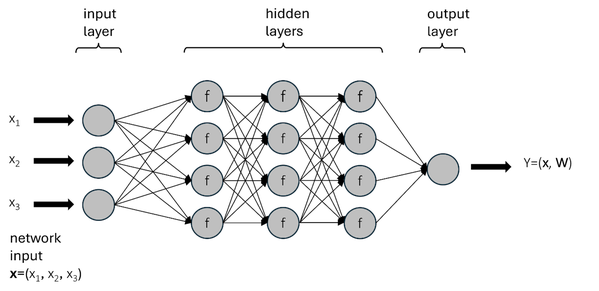The optiSLang Deep Feed Forward Network (DFFN) implements a metamodel based on Artificial Neural Network paradigms. It uses the Keras library with TensorFlow as a backend to build and train the network.
Compared to traditional feedforward networks, the Deep Feed Forward Network (DFFN) contains multiple hidden layers between the input and output layers (see Figure 2.7), which makes it more capable of learning intricate patterns and representations in data.
Figure 2.7: Schematic view of a Deep Feed Forward Network with 2 inputs and 3 hidden layers of 4 neurons with activation function f.

Using Deep Feed Forward Network for creating a MOP is beneficial if you have a lot of input designs, as its required computational time scales better than that of other surrogate models.
The identification of the network structure and respective hyperparameters is an important prerequisite to achieve high model accuracy during model training. Therefore, the DFFN comes with different network layout options. Depending on the layout chosen, the construction of the neural network model involves a different strategy for hyperparameter search as well as model training, by means of identifying the optimal network weights.


